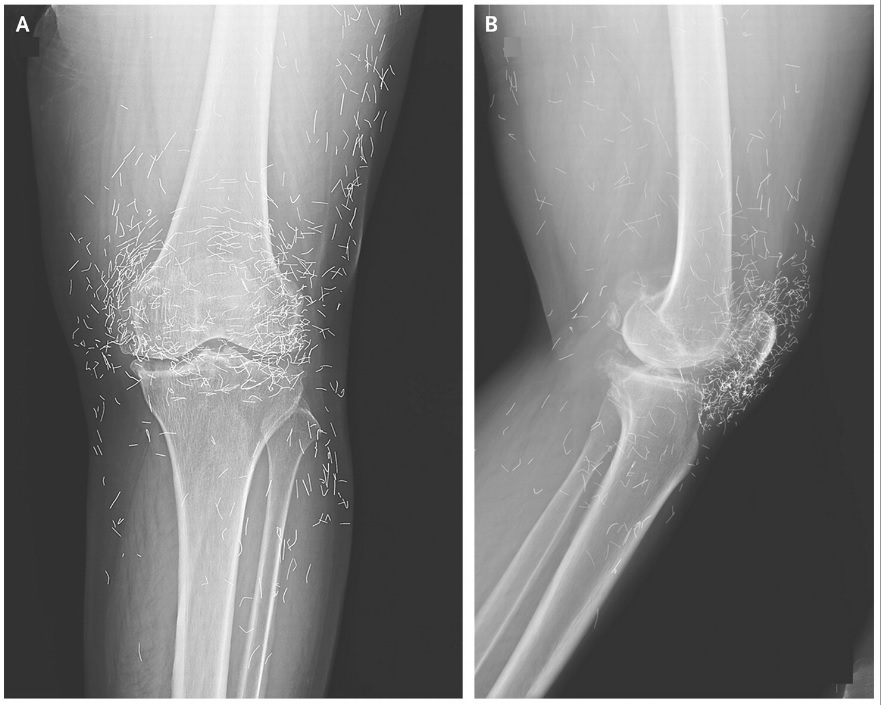A groundbreaking study published in Royal Society Open Science delves into a 225-million-year-old fossil discovered in Zambia, which could dramatically alter our understanding of early dinosaur evolution. The ancient leg bone, believed to belong to a silesaur, an early reptile close to dinosaurs, suggests that early dinosaur ancestors might have been significantly larger than previously thought. This finding casts new light on the size and ecological roles of early dinosaurs and their relatives, potentially reshaping the way we understand the Triassic period. As researchers uncover more fossil evidence, it’s becoming increasingly clear that the size of these early reptiles has been historically underestimated.
A Fragmentary Fossil With Big Implications
The fossil in question, a femur discovered in the 1960s, was not initially recognized for its significance. The bone, preserved in the archives of the Natural History Museum, had been overlooked for decades until Jack Lovegrove, a Ph.D. student, reexamined it. What makes this discovery so vital is its connection to the silesaurs, a group of early reptiles considered to be either the ancestors of dinosaurs or their closest relatives. These creatures lived during the Triassic period, and their fossilized remains have long been fragments that have perplexed paleontologists.
Jack Lovegrove’s study adds weight to the theory that these animals were not as small as initially assumed. “Some fragmentary fossils from the silesaurids and a group of early dinosaurs called the herrerasaurids suggest that these animals could grow much bigger than more complete remains suggest,” says Lovegrove. This finding implies that the size of the first dinosaurs might have been much larger than predicted, adding complexity to the narrative of their early evolution. As researchers continue to find larger fossils from the same time period, the possibility that the first dinosaur was bigger than expected is becoming a compelling theory.


The Mystery of Silesaurs and Their Evolutionary Role
For years, silesaurs were considered a sister group to dinosaurs, but modern research is revealing that they might be much closer relatives. Silesaurs, such as Silesaurus, were herbivorous reptiles that grew to about two meters in length. With their beak-like jaws, it is believed they fed on plants or insects, and for a long time, their exact relationship with dinosaurs remained uncertain. New findings, however, are offering fresh insights into their evolutionary role.
“As more large animals are found close to the origin of dinosaurs, it raises the possibility that the first dinosaur was bigger than we predicted,” Lovegrove explains. This discovery challenges the traditional view that early dinosaurs were small, agile creatures. Instead, it suggests that the first dinosaurs might have been significantly larger, potentially leading to their domination of the Triassic ecosystems. The study also touches on how silesaurs might have evolved into early dinosaurs, with some silesaurid species potentially growing much bigger than previously understood.
Despite the fragmentary nature of the fossil record, researchers are using modern techniques to better understand the relationships between silesaurs and dinosaurs. “This fossil was discovered on an expedition to what are now Zambia and Tanzania in the early 1960s,” Lovegrove elaborates. “The researchers were mainly interested in studying mammal-like reptiles such as the dicynodonts and cynodonts but also found a variety of other fossils.” This highlights the importance of museum collections in preserving specimens that may hold key information for future scientific breakthroughs.
Unraveling the Complexity of Triassic Ecosystems
The findings of Lovegrove and his colleagues challenge the idea that silesaurs were merely small, herbivorous creatures in the shadow of larger animals. Their study suggests that silesaurids, particularly those from the Triassic rocks of Zambia, could have been the largest herbivores in their ecosystems. “The size of the bone we’ve studied, as well as others from this formation, suggest that silesaurids might have been the largest herbivores in some parts of the world at this point in the Triassic,” Lovegrove explains. The implications are significant: these reptiles might have outgrown even the dicynodonts, traditionally considered the dominant herbivores of the time.
This revelation leads to a reimagining of the role silesaurs played in Triassic ecosystems. Their larger size would have given them a much greater ecological impact than previously realized. “The biggest silesaurids were probably taller and longer than the dicynodonts, even if they were lighter,” Lovegrove notes. It’s possible that these reptiles were more influential in shaping the Triassic environment, a fact that researchers are only beginning to appreciate fully.
The implications of this discovery stretch beyond the size of these ancient reptiles. If silesaurs were indeed the largest herbivores in certain regions, it challenges the traditional view of Triassic ecosystems as being dominated by dicynodonts. “It suggests they probably had a much greater impact on the ecosystem than we’ve realized, especially as they are the most common archosaur found in this region,” Lovegrove concludes. This new perspective on silesaur ecology is crucial for understanding how the first dinosaurs and their relatives shaped the ancient world.
Source link


